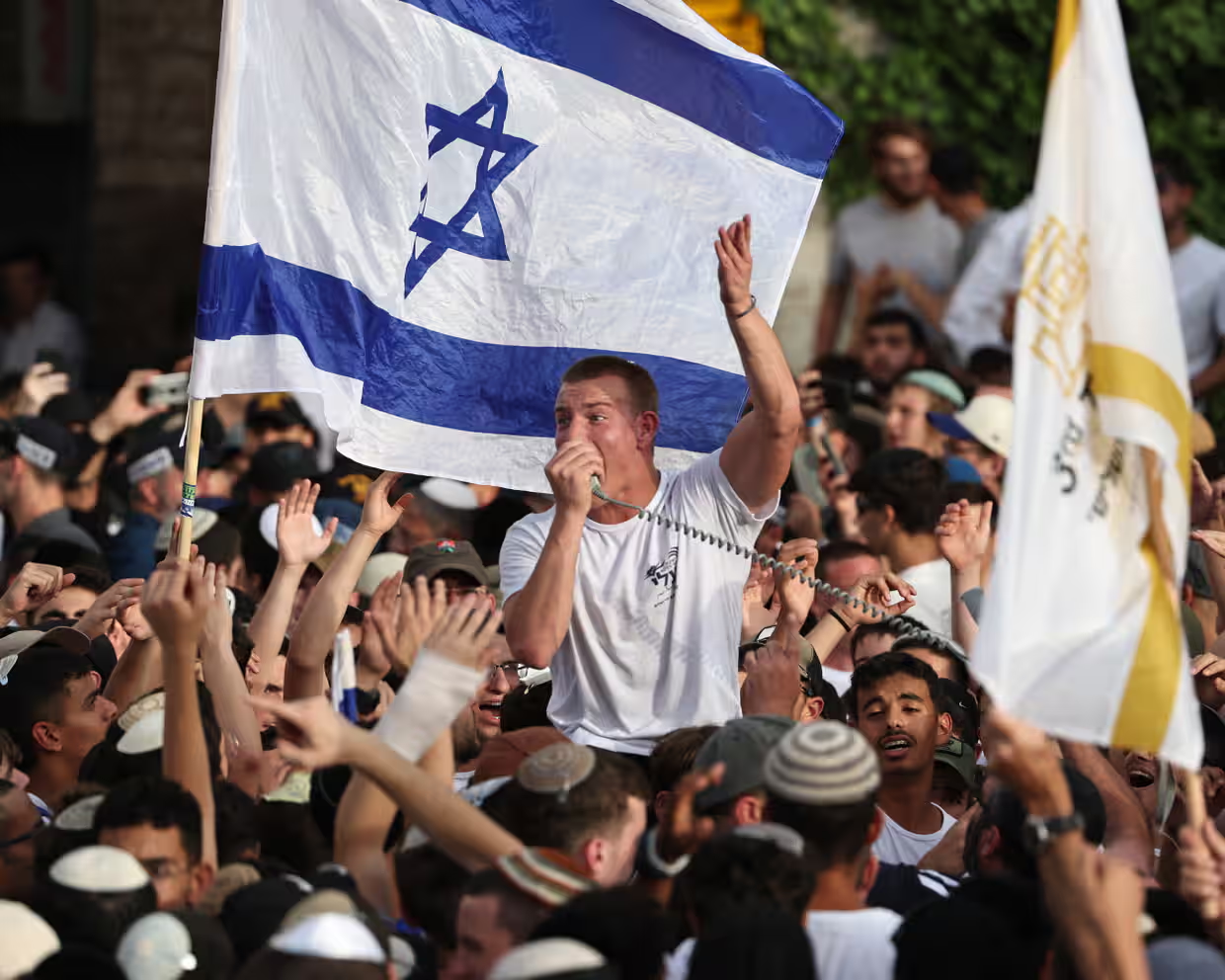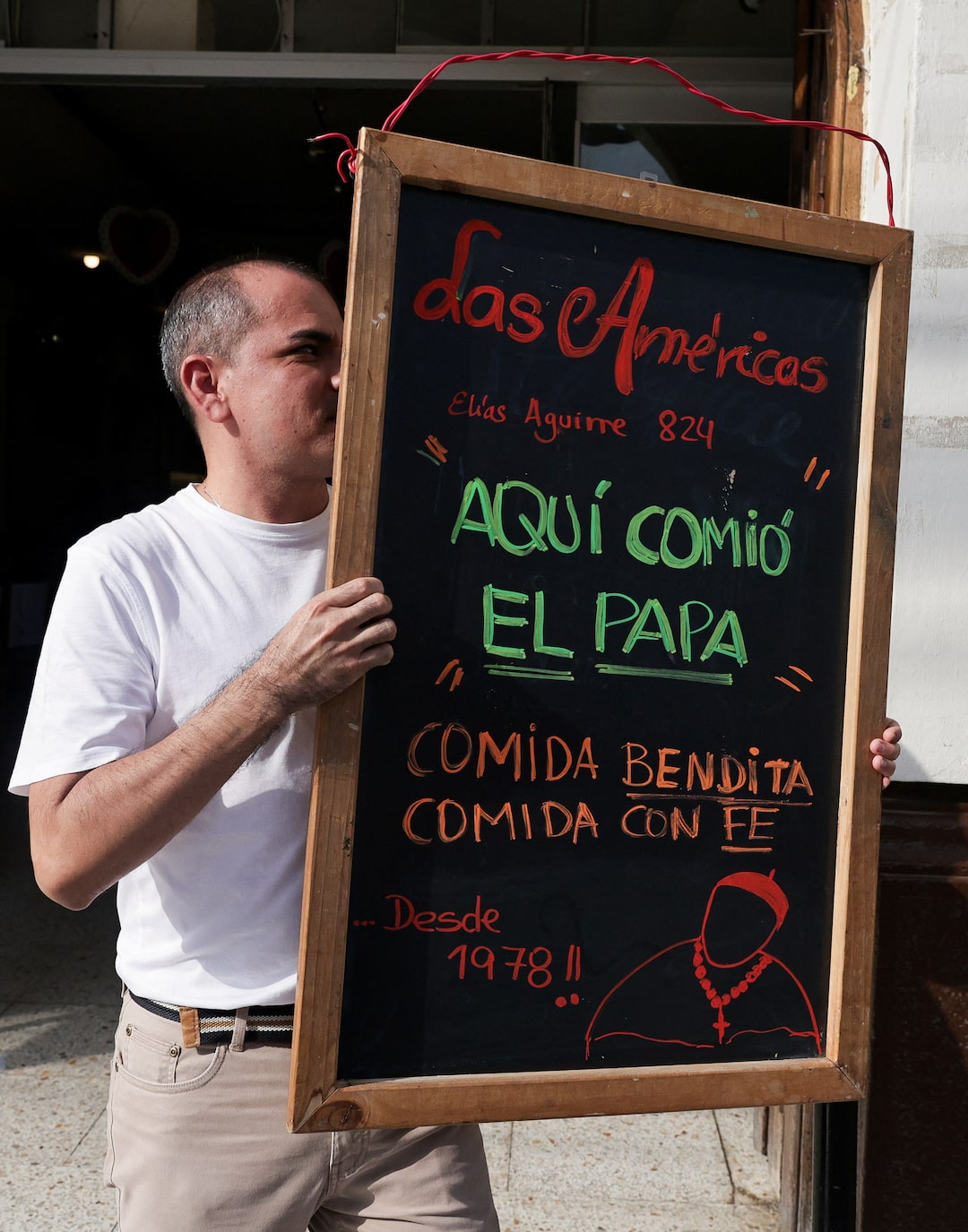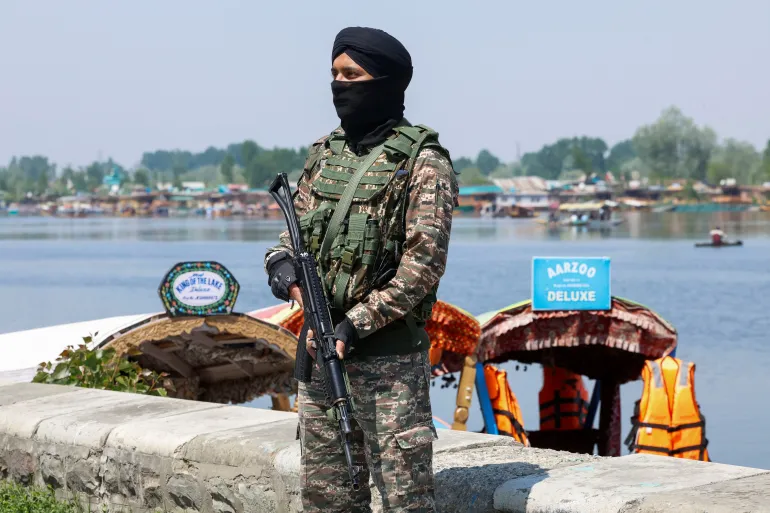Thousands of Israeli nationalists marched through the Muslim Quarter of Jerusalem’s Old City on Sunday, waving flags and chanting patriotic and religious slogans in a controversial annual display that Palestinian leaders have condemned as provocative and inflammatory.
The “Flag March”, held to commemorate Jerusalem Day, marks the Israeli capture of East Jerusalem during the 1967 Six-Day War. While Israelis view it as a celebration of the city’s “unification,” Palestinians regard it as a symbol of occupation and aggression.
This year’s march, like previous ones, drew participation from far-right activists and settler groups, some of whom chanted anti-Arab slogans and engaged in confrontations with Palestinian residents. Israeli police deployed thousands of officers, including border units and riot control forces, to secure the event and prevent violence.
Footage from the scene showed marchers waving Israeli flags, dancing, and singing nationalist songs near the Damascus Gate, a main entry point to the Muslim Quarter. Some participants were seen shouting “Death to Arabs” and “May your village burn,” prompting widespread condemnation from Palestinian leaders and human rights groups.
Palestinian shopkeepers in the Old City were reportedly forced to close their businesses for the day, with many residents avoiding the area due to the heavy police presence and tensions.
The Palestinian Authority issued a statement calling the march a “racist, colonial display” and accusing the Israeli government of deliberately escalating tensions in occupied East Jerusalem. “This parade is not about unity—it is about intimidation and asserting control over a city that belongs to two peoples,” the statement read.
Israeli Prime Minister Benjamin Netanyahu, who has strongly supported nationalist expressions of sovereignty over all of Jerusalem, praised the march, calling it “a celebration of the eternal capital of the Jewish people.” His government, the most right-wing in Israel’s history, has faced international criticism for allowing extremist rhetoric to flourish during such events.
The United Nations and several European countries have expressed concern over the conduct of the march, especially given the fragile situation in Jerusalem and the broader Israeli-Palestinian conflict. The U.S. State Department, while stopping short of condemning the event, urged all sides to “avoid actions or rhetoric that exacerbate tensions.”
Rights groups, including B’Tselem and Amnesty International, decried the march as a platform for incitement and ethnic intimidation. “The march is not just a parade—it is a demonstration of dominance through militarized policing and sanctioned hate speech,” said a spokesperson from B’Tselem.
Despite the provocative elements, the march ended without large-scale violence. However, several minor scuffles were reported, and at least 15 Palestinians were detained, according to local media. Police said they acted to prevent clashes and maintain public order.
Critics argue that the event underscores deeper issues within Israeli society, particularly the emboldening of far-right elements under Netanyahu’s leadership. In recent years, such marches have become flashpoints for intercommunal violence, including riots and rocket exchanges between Israeli forces and Palestinian factions in Gaza.
The march also comes amid ongoing unrest in the West Bank and heightened tensions over Israeli military operations in Rafah and Jenin, where dozens of Palestinians have been killed in recent weeks. Palestinian leaders warned that the display in Jerusalem could trigger wider violence.
Jerusalem’s Old City remains a focal point of competing national narratives and religious claims. The Al-Aqsa Mosque compound, located just steps from the march route, is a particularly sensitive site and has been the epicenter of repeated clashes between Palestinians and Israeli security forces.
As the march concluded, many Palestinians and international observers questioned how long such annual displays of nationalist fervor can continue without sparking broader unrest or undermining prospects for peace. For now, the Old City returns to its tense routine—marked by surveillance, checkpoints, and the uneasy co-existence of its deeply divided communities.
Source: The Guardian



